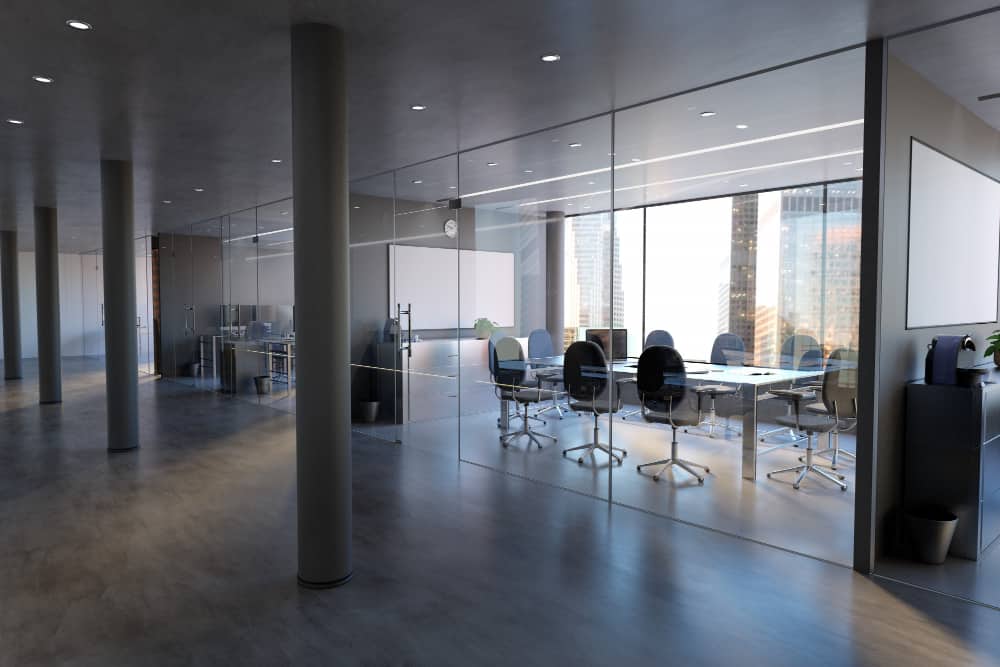Menu
Office buildings range from high-rise multi-tenant structures in urban cores to suburban office parks to exurban single-tenant buildings built to suit a specific tenant. Office spaces can include the typical office with furniture and conference rooms, as well as medical offices and flex spaces with different features and demands.

The COVID-19 pandemic fundamentally reshaped how we work. The rise of remote work and hybrid models has sent shockwaves through the office space market. While some might see this as a sign of a dying industry, the reality is more nuanced. Here's a look at the current state of office space and what it means for investors:
A Market in Transition
The office space market is currently in a state of flux. Pre-pandemic vacancy rates are a thing of the past, with many offices experiencing higher vacancy due to the shift towards hybrid work. This presents a challenge for investors, but also an opportunity.
Challenges and Considerations
Reasons for Optimism
Investing in the New Office Market
The office space market may be different, but it's not disappearing. For investors, success hinges on careful market research, a focus on properties that cater to the hybrid work model, and a willingness to adapt.
Ready to Learn More?
Contact us today to discuss how you can navigate the evolving office space market and make informed investment decisions.

Dedicated To Helping You Navigate The Office Property Investment Market
Smart investors and developers will tailor equipment and space amenities that will attract millennial and Gen Z workers - bike racks and lockers, secure and high-capacity internet, “hip” decorations in common areas. The potential of ground-floor mixed-use space, proximity to transit and recreational opportunities are also popular.
Opportunities to have attractive amenities that will entice potential office leasing prospects also include providing furniture and digital equipment as well as phone message and reception personnel. All of these will create interest and provide differentiation from “old school” properties that just provide space.
There are different types of commercial office buildings. Office properties are typically divided into three main categories, Class A, Class B and Class C. While there aren’t any hard and fast specifics for these classifications, they are usually based on things such as building age, amenities and aesthetics.
Is usually seen as “the nicest space” available in a specific area. These buildings are generally either new developments or properties that have had significant improvements and renovations in recent years. The building’s common areas will have high-quality finishes and offer or be near to amenities such as covered parking, fitness centers, leisure areas (restaurants or cafeterias).
These buildings are also typically conveniently located, either in a central business district or on or near major streets, highways or transit centers. Newer downtown skyscrapers and attractive office campuses are still the typical Class A properties.
Class B office buildings are seen as slightly lower than Class A in terms of quality. If a company that wants to have its offices in a quality building but is unable or unwilling to pay high rental rates, Class B offices are the next reasonable alternative.
This type of building can be found in major commercial areas but is more commonly found in the suburbs. Age is one of the most common factors for a building being considered Class B, as they are usually older, and although once considered Class A have been downgraded due to age and deterioration.
Rental rates for Class B buildings are lower than Class A. However, these properties usually have reasonably good amenities, management companies and tenants, and can even be brought up to Class A standards with common area renovations and amenity upgrades, as mentioned above.
Class C properties are typically very dated, with minimal amenities and located in less desirable locations. These properties are sometimes slow to lease and occupied by tenants requiring high-value office space. They tend to appeal companies looking for a functional space with below market rates, or to small, start-up tenants because they can allocate financial resources towards growth, while keeping a sufficient roof over their heads
If you are an investor interested in purchasing a redevelopment opportunity and have the capability of refurbishing the space OR just want to have a lower cost investment that generates a reasonably good return, Class C buildings can be an excellent option.